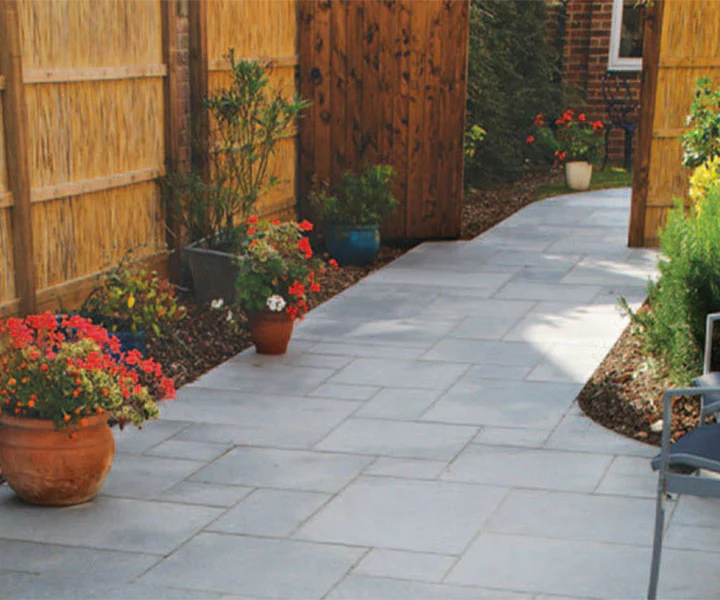When laying a patio with pavers of different sizes, there are innumerable layouts and patterns available to the landscaper
And even when using a single size paver, there are several approaches which can be used, which we will look at here.
The difference between patterns and layouts
While ‘layout’ is sometimes synonymous with ‘pattern’, it is more commonly accepted that a ‘layout’ refers to a random arrangement. A ‘pattern’, by contrast, is any repeating arrangement, including a ‘motif’ – which is a number of pavers arranged in a certain way and then repeated.
Motifs
In its simplest form, a motif could be a single flag, repeated. An arrangement of numerous pavers can also constitute a motif, with varying levels of complexity. Some patios appear to be ‘random’, but on closer inspection are actually repeating motifs. A single motif might include 20 or more pavers.
Single Size Patterns – Stack bonds
The stack bond, where pavers are laid out in a simple grid, is often referred to as a ‘chess board’ layout – for obvious reasons. This is as simple as laying a patio gets, but has the drawback of making it evident if there is any deviation in jointing or paver size. This arrangement can also increase the chances of rows of pavers sliding out of place, in a similar way to a child’s sliding grid puzzle.
Offset single size patterns
The potential lack of rigidity seen in the stack bond can be remedied by offsetting pavers by half a length – in an offset single size pattern. This staggering can be arranged transversely or longitudinally.
Herringbone
The herringbone eliminates the possibility of continuous extended joints and is therefore considered a ‘fully interlocked’ pattern. Because it resists being displaced by heavy weights, herringbone is popular in zones where vehicles will be driven or parked. A stack bond or offset single size pattern would not cope well with vehicles accelerating, decelerating and turning on its surface without the arrangement becoming distorted over time. Obviously, the herringbone pattern cannot be achieved with square pavers – only rectangular ones.
